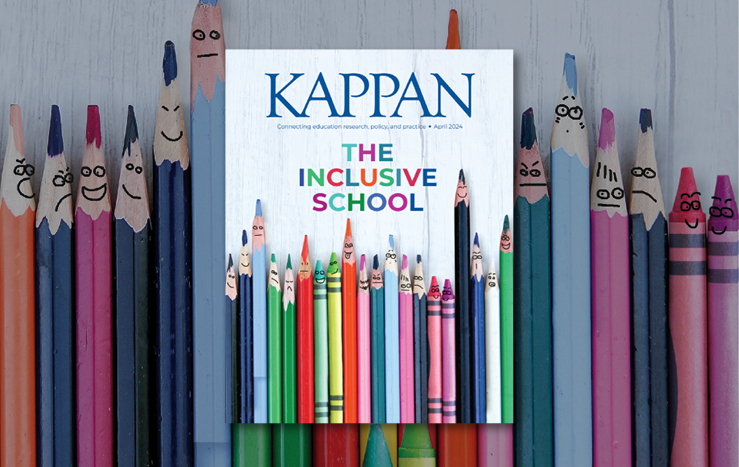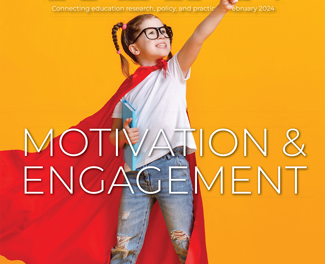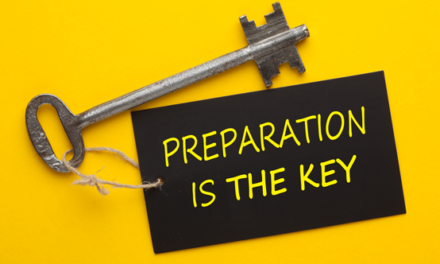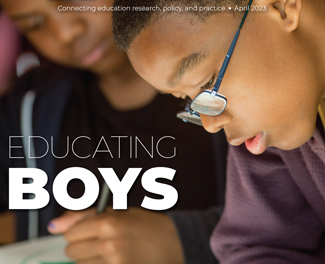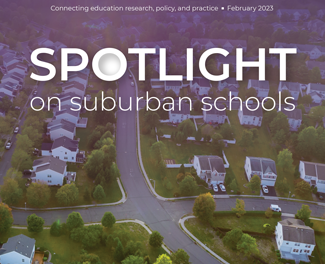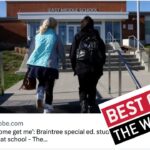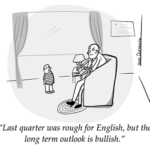In education, the term inclusion generally refers to ensuring that students with disabilities are included in general education classrooms as much as possible. In this issue of Kappan, Katie Novak and Helene Paroff discuss how they’ve worked to promote this very type of inclusion in Washington state. However, we expand the conversation about inclusion to encompass not just ability and disability, but also income, race, and culture — any identity that might cause some students to be left out.
The U.S. public school system is expansive. It’s intended to be for everyone. No one — no matter their income level, race, gender, or ability — can be denied an education. The U.S. Constitution does not explicitly name education as a fundamental right, although some state constitutions do. And legal scholars and lawmakers alike have found support in the Constitution for ensuring that schools serve all students. This openness and availability to all makes our public school system one of our nation’s greatest treasures.
Unfortunately, schools haven’t always lived up to this standard. As Novak and Paroff explain, schools sometimes fail to treat students with disabilities like part of the wider school community. Adai A. Tefera and her co-authors point out that certain disciplinary policies and practices have caused some students to be excluded by race. And Gloria McDaniel-Hall and Nina F. Weisling describe how cultural disconnects sometimes create tension between teachers and the students they are committed to serve.
McDaniel-Hall and Weisling go on to share how it’s not always easy for any of us to see when we’re leaving others out. We make mistakes without meaning to, and we get defensive when others notice our mistakes. In some cases, data can help, as Novak and Paroff and Tefera and her co-authors explain. But sometimes we just need to recognize one another’s humanity. We need to understand that hurt feelings are real, whether the hurt was intentional or not. When feelings are hurt, students and teachers alike feel unsafe. And when any of us feel unsafe, our brains have trouble taking in new ideas. This is part of being human.
Peter W. Cookson urges educators to focus on our shared humanity to build connections with students. He describes schools that are filled with hope, where students feel secure and connected to others. These schools do not necessarily have a lot of material resources, but students and teachers have each other. The human resources within a school are essential, and every person matters when it comes to creating a space where students feel safe and ready to learn. The community outside a school also matters, as Darrius A. Stanley and his co-authors explain. Families and communities can be invaluable sources of knowledge and energy when schools take the time to listen, engage, advocate, and partner with them.
At a time when conflict over identity and status seems to be everywhere, being able to see our shared humanity is especially important. This doesn’t mean ignoring people’s individual identities. On the contrary, it’s about seeing the different experiences and backgrounds within the community as assets. Andy Hargreaves and Dennis Shirley point out that being mindful of identity-based concerns can give us tools that help everyone. This is the idea behind universal design for learning, in which supports for students with disabilities are also useful to students without disabilities. All of us have special needs, whether they are obvious or not. And schools have a responsibility to take care of people with all kinds of needs. It’s a challenge, but one that every student depends on schools to meet.
This article appears in the April 2024 issue of Kappan, Vol. 105, No. 7, p. 4.
ABOUT THE AUTHOR

Teresa Preston
Teresa Preston is editor-in-chief of Phi Delta Kappan and director of publications for PDK International, Arlington, VA.
Visit their website at: https://pdkintl.org/
